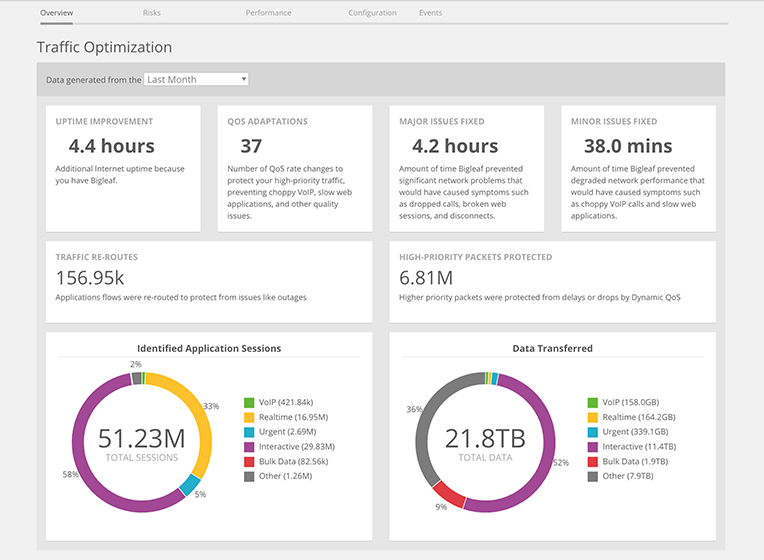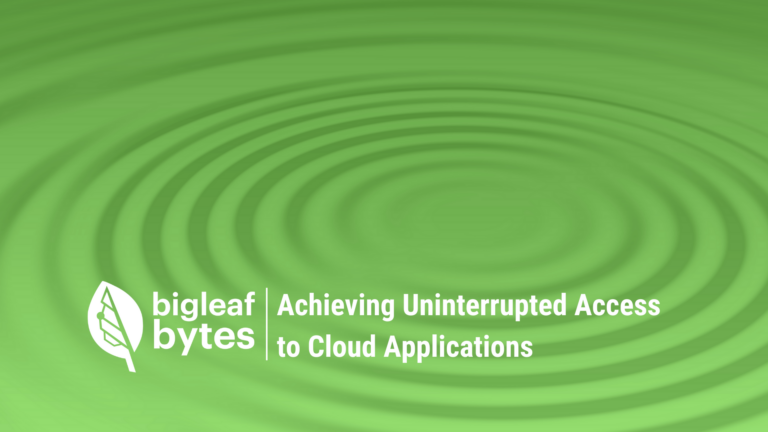70% of organizations have a digital transformation strategy in place or are working on one, while 45% of executives aren’t confident their companies have the right technology infrastructure in place to implement it.
For the business considering digital transformation initiatives for their employee applications, efforts will only be as successful as the user experiences they create. You can deploy the best applications money can buy and spend all the money you want on WiFi access points, but the user’s experience is only as good as the foundation of connectivity that it travels over.
Despite its vital role in the process, the concept of connectivity relative to digital transformation is not one of the more high-profile topics of discussion. Often overlooked in the planning phase, connectivity can compromise your digital transformation initiative if you don’t get it right.
In our recent webinar, “Building digital transformation success on a reliable connectivity foundation,” we discussed how to ensure that your connectivity foundation will fully support a successful digital transformation.
Rethinking how you look at connectivity
A big part of digital transformation is taking technology out of your server closet and migrating it to AWS, Azure, or data centers where software packages are installed. If you are a multi-site organization and choose to host an application at one of your locations, you have some options because you can put an SD-WAN device at either end to help manage traffic and get some predictable performance.
But a lot of other technologies will live on the internet, not in one of the company’s buildings. These are SaaS applications like Salesforce or Dropbox, VoIP phones like RingCentral, and collaboration tools like Slack. These tools don’t exist in a location you own, where you might put another device at the other end to maintain control. Cloud-based applications effectively place the internet in the middle of your network.
To ensure you can consistently provide a reliable experience for all users, you should rethink how you look at connectivity.
The internet wasn’t really designed for the kind of high-performance business technologies that we use today. Originally, we were mostly transferring small or straightforward files in a variety of ways. These processes were not significantly impacted by packet loss, latency, or jitter. But when your business relies on VoIP phone conversations and real-time video collaboration, a little bit of packet loss can derail an entire meeting.
The distributed nature of the public internet exacerbates the issue because it does not give you a single source of truth or means of control. Visibility is limited into the network that hosts your traffic, and it is often difficult to determine where the problems are, what you can do to fix problems when they arise, and who to turn to for help. This becomes a challenge, and it translates into real pain for businesses on their digital journey. Techaisle, a global SMB IT market research and industry analyst organization, completed a survey that found 69% of businesses are getting monthly connectivity complaints from their users, about everything from dropped calls to poor SaaS application performance. These issues can stop a digital transformation initiative in its tracks because they create friction for adoption, and it kills productivity.
Three pillars of connectivity for digital transformation
Creating reliable connectivity on the unreliable internet means rethinking the connectivity for the new needs of digital technologies. Think of connectivity as having three pillars:
- Resilient connectivity — Make sure you have enough capacity for all of your traffic with redundancy built in.
- Real-time control — Your system should be proactive and fix things in real time before an application fails and a complaint is registered.
- Operationalization — Provide IT with the visibility, alerts, and troubleshooting tools they need to ensure the ongoing success of the connectivity and ultimately the digital technologies.
Real-time control requires building intelligence into your network. We recommend an active-active configuration versus paying for a second circuit that only sits there, idle, in failover mode. An active-active configuration provides the same failover protection and allows you to leverage the connection of both circuits as it can move traffic between those ISPs without being disruptive — for example, moving a Zoom call between circuits without interrupting the conversation.
Rearchitecting your network for resilient, reliable connectivity
In our model, reliable connectivity has three components: capacity, performance, and diversity.
Capacity refers to the total room you need for the type of traffic you have running through your applications, so you should think about capacity in those terms.
This data will help you establish an initial baseline and avoid wasting resources on excess capacity. The key here is to understand your total potential capacity consumption. Some apps are more volatile with respect to consumption, so your capacity needs can vary. You can start small, then increase capacity as you need more.
Enhanced network diversity makes it easier to route around performance issues. Relying on a single carrier leaves you vulnerable, because if that ISP has a problem such as low power at a data center or network equipment overload, it’s your problem. If you run a single connection through a single ISP, you are at risk for losing complete connectivity, but you’re also at risk for performance blips. Those are hard to collect metrics on and can create all sorts of headaches.
Performance has traditionally been all about metrics, specifically uptime. You should consider the variability that can come from a circuit, because there is a lot of real estate between a level seven outage and usable internet connectivity.
From our data, we’ve found that the average business internet connection experiences 2.6 hours of downtime and 47.75 hours of unusable internet per month.
Unusable connectivity directly correlates to an application not working effectively and that impacts your team’s productivity. This is why evaluating performance in this manner is vital to building a strong connectivity stack.
For more detail and color on all of this, watch the recording of our webinar on reliable connectivity for digital transformations.
Intelligent networking solutions can help
Using multiple connections does not have to be hard work. Intelligent network solutions like ours seamlessly maintain connectivity. Bigleaf’s active-active configuration provides the same fail-over protection as a redundant circuit and improves network performance at the same time.
With this resilient base as a foundation, we provide the intelligence to be able to move traffic back and forth between connections and prioritize traffic within those connections. Your users don’t wait for IT to be alerted to a problem, because we leverage tools like self-driving algorithms and AI and solve issues proactively.

When IT does need to become involved, intelligent networking makes their job easier by analyzing data anomalies and changes to the network, delivering alerts and creating visibility that will accelerate troubleshooting.
A proven solution, a trusted partner
Bigleaf has depth and breadth of experience helping our customers successfully build reliable, foundational connectivity to match their business needs. Bigleaf combines proven SD-WAN technology with groundbreaking AI to provide that resilient, reliable connectivity needed for successful digital transformation. And we make it easy so it’s not another item on the to-do list for the IT team to tweak or manage. The Bigleaf Cloud Access Network is a global backbone network that allows us to move traffic back and forth seamlessly on the same IP between different ISPs for whatever cloud application you’re using.
Our self-driving AI automatically classifies, prioritizes, and steers your traffic on the right path. Our solution provides alerts, reporting, and diagnostic tools to make sure that your IT team is always in the driver’s seat.
And if you run a lean IT shop, you will appreciate that Bigleaf’s solution doesn’t have any policies to build, test, or update. The Bigleaf AI takes care of that.
If you would like to learn more, request a demo. And if you have any questions, don’t hesitate to contact us.







